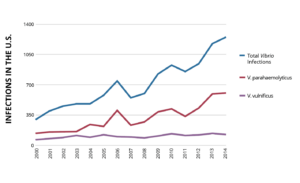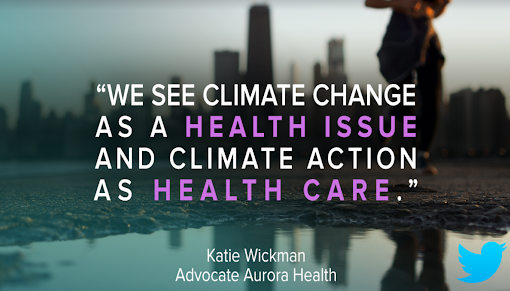By: Bria Jenkins, BSN, RN
Each year The Lancet Countdown: Tracking Progress on Health and Climate Change, an international research collaboration that monitors and reports annually on the relationship between health and climate, and its implications for national governments, releases an annual report. Country specific briefs alongside the Global Report, present relevant findings and highlights the key threats and opportunities climate change poses for health. For the month of January, we will be delving deeper, highlighting four critical insights showcased in the 2020 US Brief and recommended actions to protect health. Read the US brief here.
The Lancet’s U.S. Policy Brief outlines several “critical insights” geared at painting the picture of the U.S.’s trajectory related to the health implications of climate change. In January, we are exploring a few of these to understand what they mean and most importantly, what they mean for the health of our communities moving forward. Earlier this week, we talked about the US Policy Brief Launch event (view blog here).
Critical Insight #1: Climate Change & Vibrio
What is Vibrio?
Vibrio is a type of bacteria found in coastal waters that can cause water- or food-borne disease. The bacteria are bred in warmer waters. Rising sea levels, heavy rainfall and nutrient changes lead to high concentrations of vibrio. Warmer waters are a byproduct of rising global temperatures mostly due to catalysts like the rise of GHG emissions. If infected, vibrio can cause severe diarrhea, wound infections and even blood infections that can potentially be life-threatening.

What could this mean for us?
- A spike in infection related deaths in the U.S.
- Currently the death rate is 20% for flesh-eating skin infections which can easily jump to 50% when the infection spreads throughout the body.
- Strains of bacteria that are harder to treat and therefore more likely to be fatal because of growing bacterial resistance to antibiotics.
- This is especially dangerous in vulnerable populations – the immunocompromised.
So, what do we can we do?
- Focus efforts on the reduction of GHG emissions to reduce sea level rise, flooding, and warming waters, all of which increase the risk of Vibrio infection.
- This could look like new agricultural policies that focus on reducing air pollution like reducing need for nitrogen fertilizers or eliminating the need for the use of fossil fuels, or even investing in public health programs to protect against accelerating health threats of climate change.
Source: Lancet Countdown on Health and Climate Change 2020: Policy Brief for the United States of America by Renee N. Salas, Paige Knappenberger Lester, Jeremy J. Hess. For more information, read the full brief here.




